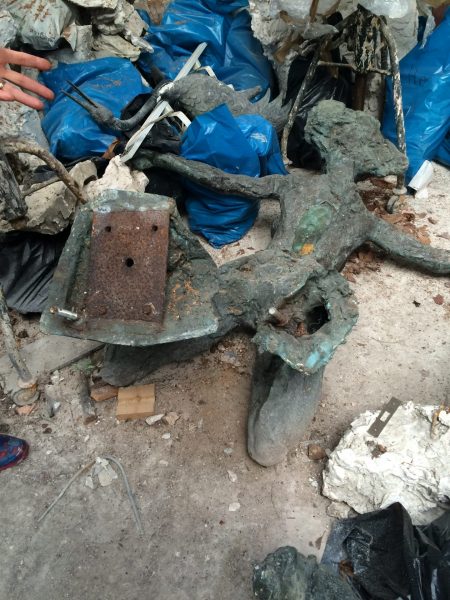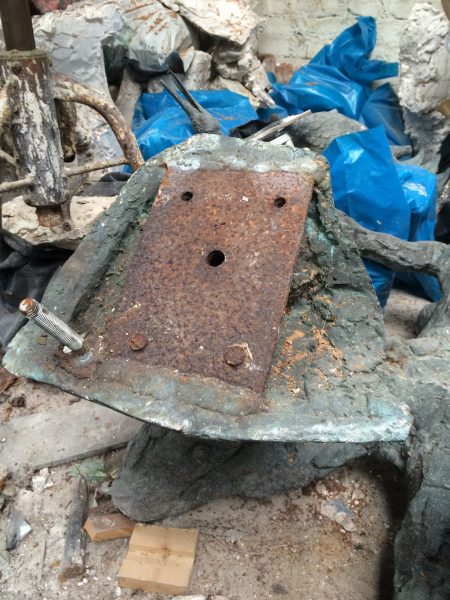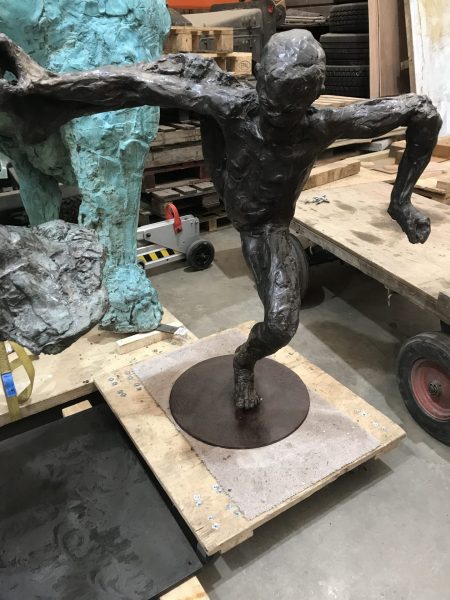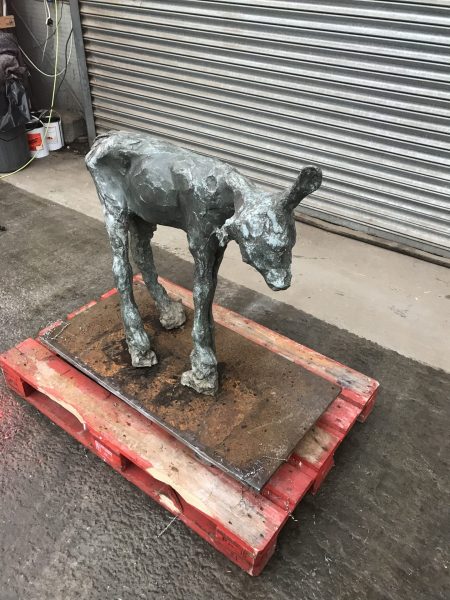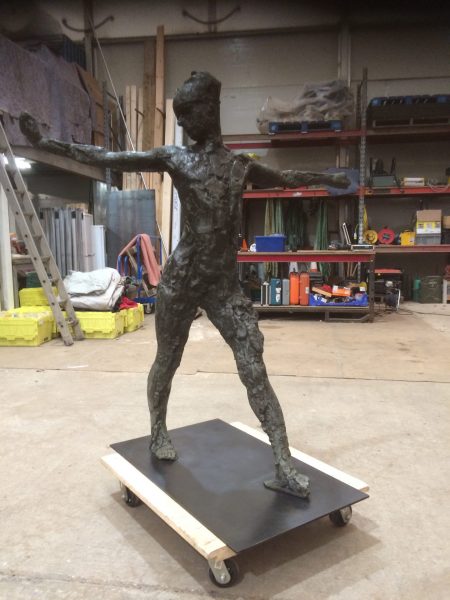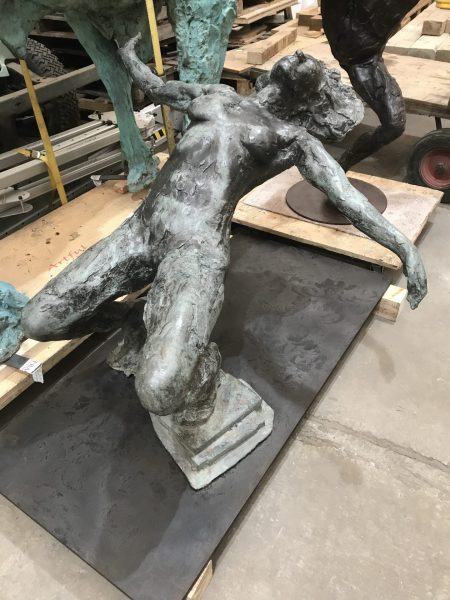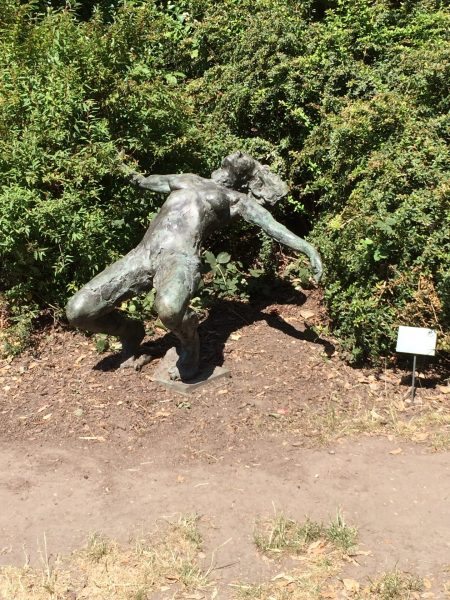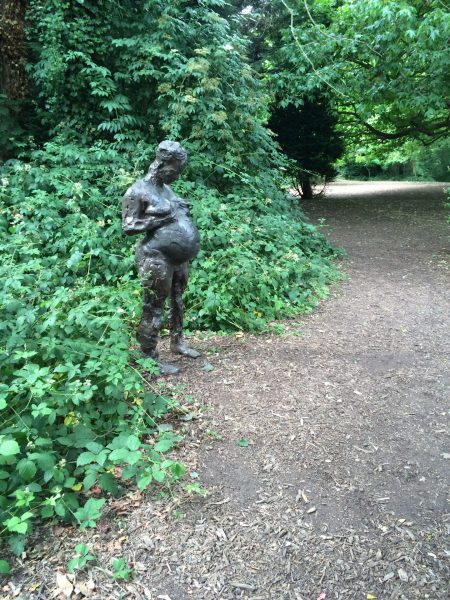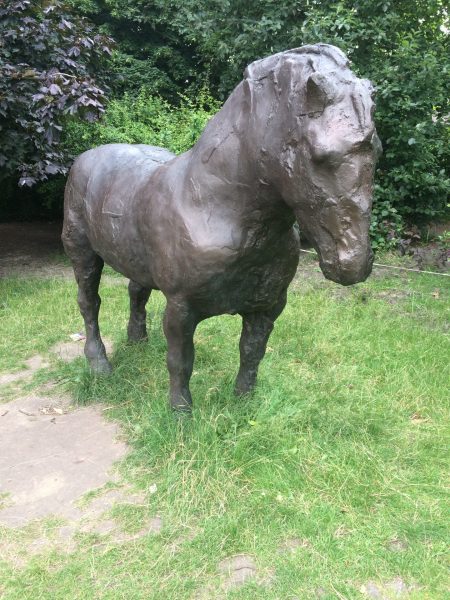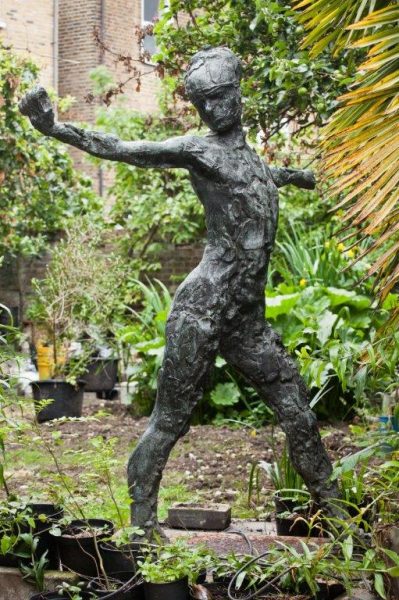
Project Brief
Brian Taylor was particularly fascinated by the study of human and animal forms. In 1998 Taylor was elected a Fellow member of the Society of Portrait Sculptors and made a Fellow of the Royal Society of British Sculptors. The following year Michele curated a retrospective exhibition for Brian.” She hired “The Gallery in Cork St”, and titled the show, “Sculpting from Life”. At The Society of Portrait Sculptors’ annual show the next month Brian Taylor’s achievement was recognised with the Jean Masson Davidson award.
Since Brian’s parting his workshop had fallen into disrepair, the roof was collapsing and the weather had free access. Bronzes and moulds were strewn around the rooms amidst the detritus of a long disused studio. Access was a big factor as to why things had got into such a sad state – two sets of narrow steps and a long passageway were big impediments to physically bringing his work back into the sunlight.
Working closely with Brian’s wife Michele Franklin our team from Artful extricated these valuable pieces and they were transported to our Canterbury workshop.
The initial plan was that the pieces should be restored and made ready for a forthcoming public exhibition in the grounds of Mycenae House, Greenwich.
Our first inspection showed that a lot of remedial work would be necessary as well as the requirement that each sculpture was suitably mounted to provide for stability in a public place, security against theft and accidental damage, and that at the same time any such bases or plinths would enhance and not detract from the magnificence of the pieces themselves.
Each piece was individually assessed and a staged plan of works evolved. At each stage progress against the plan was communicated to Michele so that she was always fully aware of any work being undertaken and, very importantly, could ensure that decisions and costs were kept under her control.
Some items needed only superficial restoration. The existing patina was carefully preserved as the pieces were cleaned and relaxed – we use cleaning agents and ‘Renaissance’ wax which was especially developed for this use by the British Museum Research Laboratory in the 1950s.
Other pieces required more serious intervention and areas of damaged patination were refinished to blend with the original colouration.
For me, Simon Warner, it was a privilege to work with such wonderful observed art.
During the process of restoration and repair, as I ran my hands over his works, I could feel the vitality of the pieces, their muscular structure, the marvellous quality of Brian’s sculpting translated into bronze.
After initial restoration was complete, each piece was again individually assessed for stability and, whilst in some cases the existing bases could be repaired and reused, in many cases complete new bases were required.
On some pieces no provision for fixing to a base had been made. A variety of fixing methods – welded flanges, drilling and tapping fixing points etc – was decided upon and these were then fabricated and attached so that the pieces and bases could be securely joined.
It was decided that for the purposes of the forthcoming exhibition all of the steel bases were to be finished in black wax. This hot-wax finish is applied in layers so that a durable slightly textured finish is achieved.
The finish is suitable for external display over a period of a few months and gradually develops its own character as people walk over it and scuff it with their footwear.
When we installed the exhibition it was possible to cover the steel bases with leaf mould and earth so that the sculptures could be displayed in a most life-like setting – as though they were an integral part of their surroundings and not planted upon it.
A hot-waxed finish such as we employed here can equally be utilised in more protected environments where, with regular gentle polishing, it achieves a rich lustrous sheen which especially compliments bronzes.
Artful’s experienced team of technicians transported and installed a large number of Brian’s sculptures first at Mycenae House and then subsequently at the Yehudi Menuhin School as well as both private and commercial establishments.
When the sculptures are not on display they are removed to our (Artful Logistics Ltd) storage facility in Canterbury, Kent. We provide a variety of storage solutions – in this case the sculptures are stored in a CCTV and security protected container facility whilst the mould which were also removed from the studio are kept on racking in another.
This arrangement allows for items to be readily located, securely and properly stored, and permits cost efficient handling and transport between venues.
“They’re not the cheapest but are the best! That’s because they are able to properly assess and price a job right at the beginning and hold to this throughout. As soon as I met Simon his reassuring manner filled me with the confidence that Artful had the experience to deal with the difficult work of transporting my late husband’s life size bronzes.
He took the time to explain in detail the machinery they had available to efficiently and safely manoeuvre Brian’s pieces, at the same time taking into consideration the poor condition of some of the bases. The ‘proof is in the pudding’; whilst watching the Artful team work together I felt completely reassured they had everything under control. They seemed unruffled by any obstacles that came their way and always had a solution to any difficulties. Their work is always up to a high and professional standard and very importantly: They’re all ‘people persons’, and so are great to work with. I highly recommend them”.
Michele Franklin


